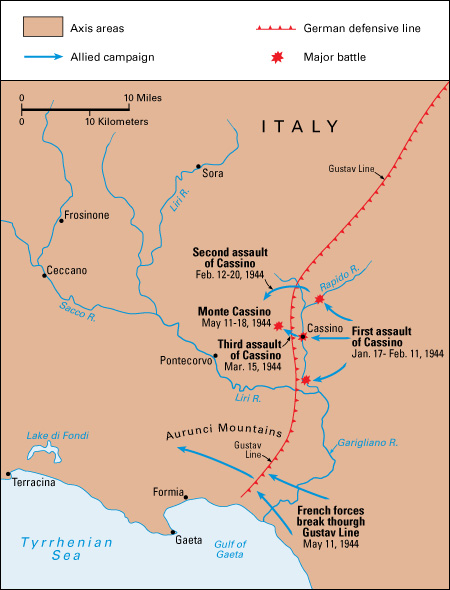Cassino << kuh SEE noh >> (pop. 35,300) is a town in central Italy about 75 miles (121 kilometers) southeast of Rome. Cassino lies along the Rapido River near a hill called Monte Cassino. Benedictine monks established a famous monastery atop the hill in A.D. 529. From about the 1000’s to the 1300’s, during the Middle Ages, the Monte Cassino monastery was a center of culture and education.
During World War II (1939-1945), the German army made Cassino a stronghold in their defensive Gustav Line meant to stop the Allied advance in Italy. On Jan. 17, 1944, American, British, and French troops attacked but failed to take Cassino. Further attacks failed in early February. On February 15, American bombers and artillery smashed the hilltop—including the ancient abbey, which the Allies had previously been careful to spare. Indian and New Zealander troops then stormed the hill, but they withdrew after suffering heavy losses. On March 15, the Allies launched another attack, which the Germans pushed back. Soldiers from 21 different nations fortified the Allied forces and on May 11, the attack on Monte Cassino resumed. Polish forces finally drove the Germans from the summit, occupying the heights on the morning of May 18.

The Americans and British were supported by troops from Canada, France, India, Morocco, Nepal, New Zealand, Poland, and other countries. Thousands of soldiers died in the savage fighting at Cassino. The town, which was almost completely destroyed, was rebuilt after the war. The devastated monastery was reconstructed, and Pope Paul VI reconsecrated it in 1964.
